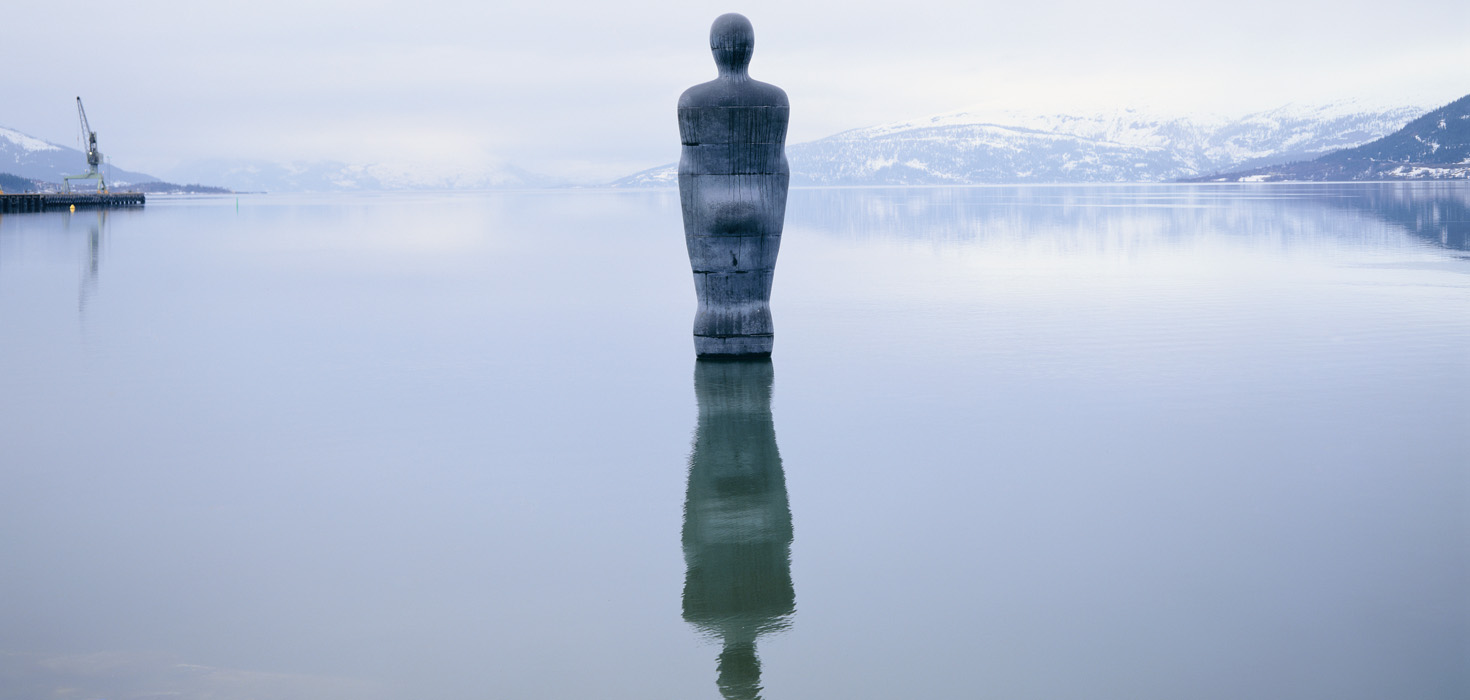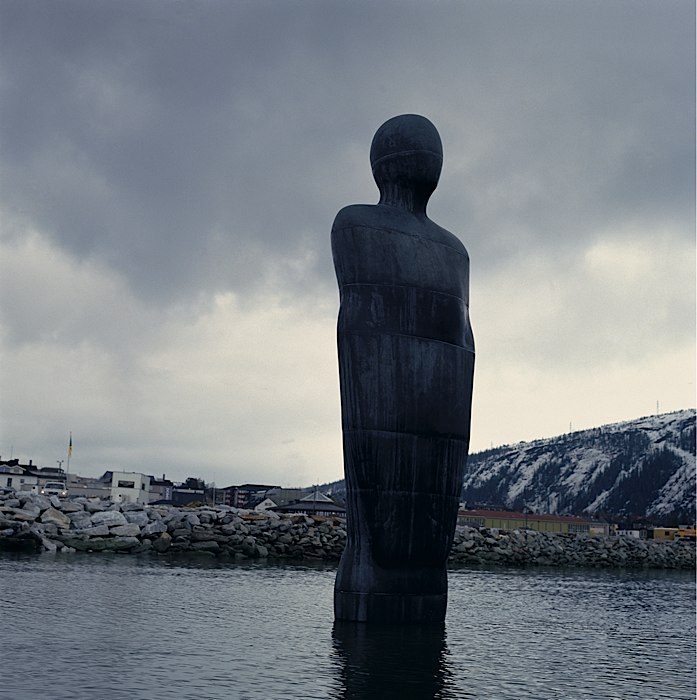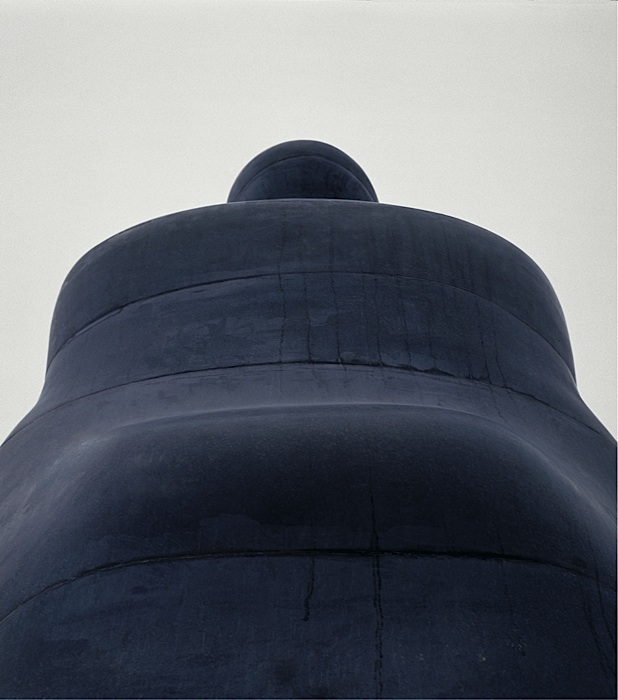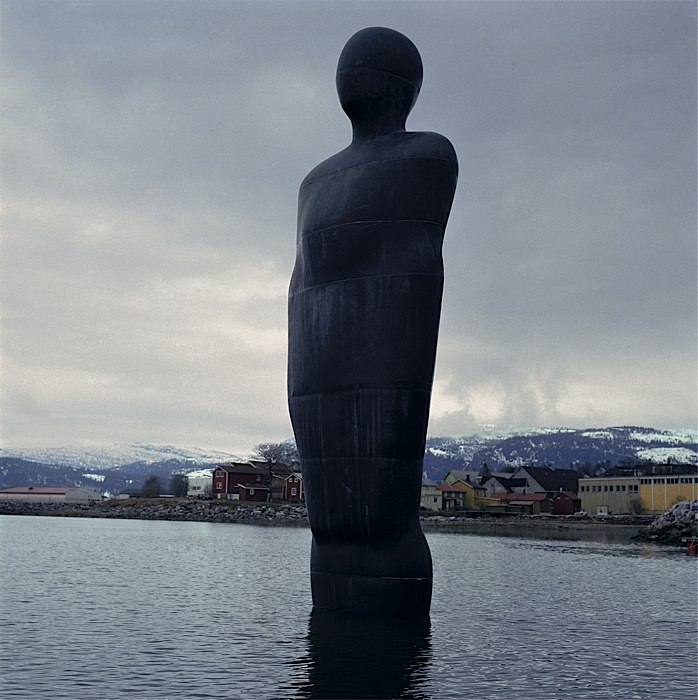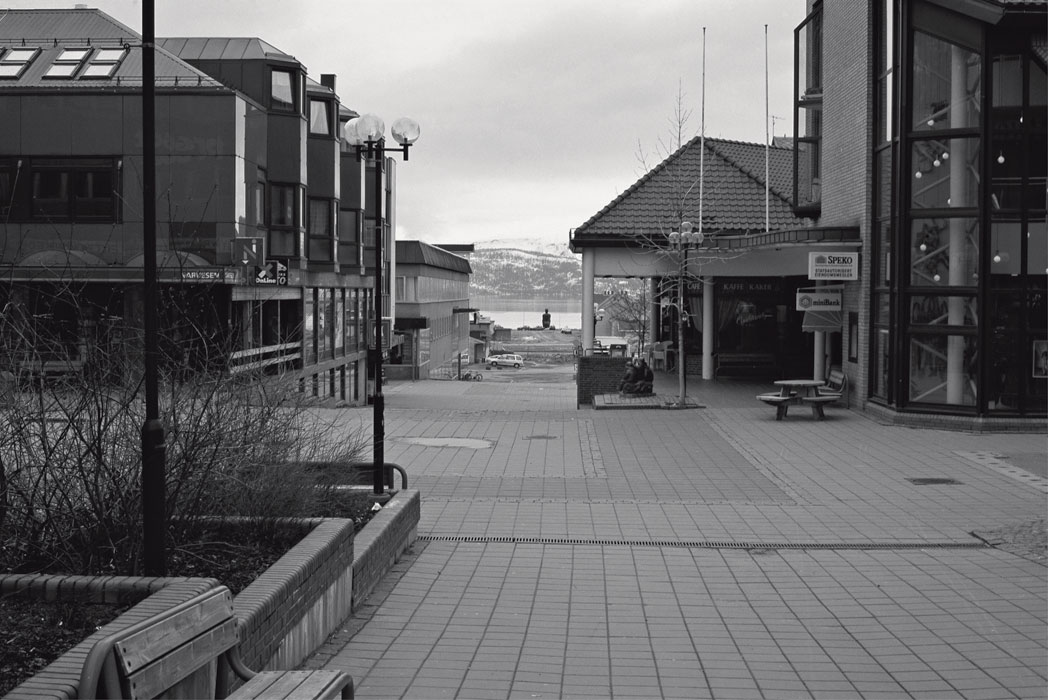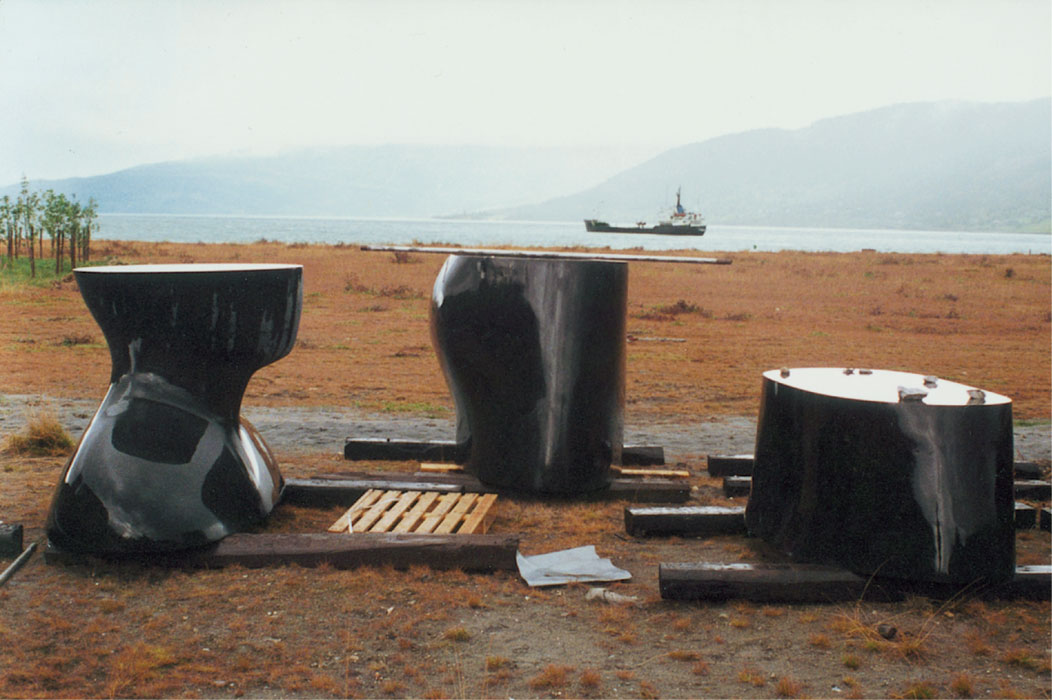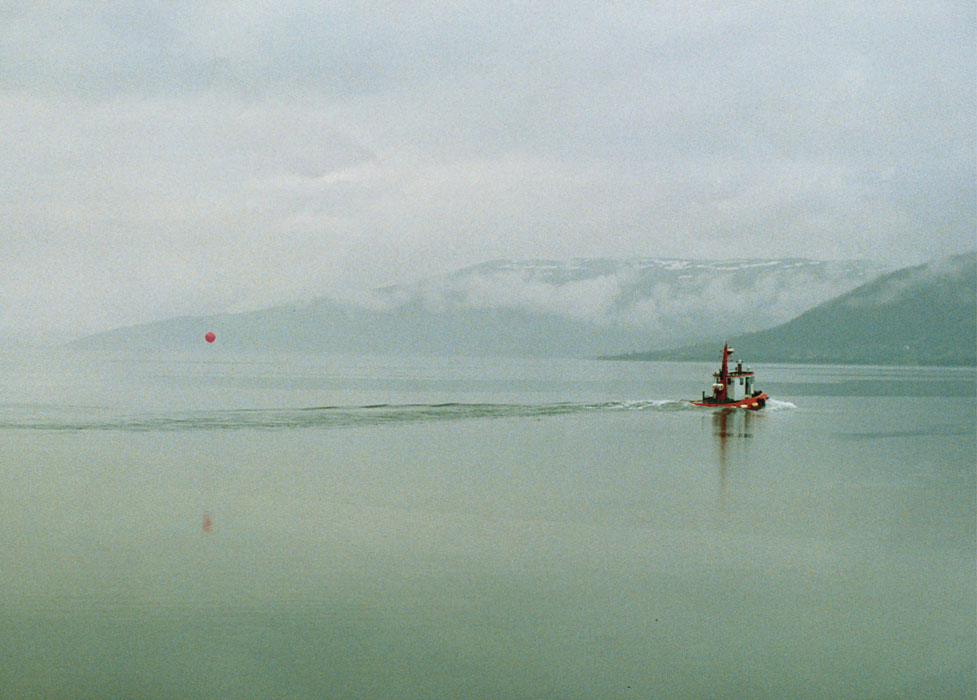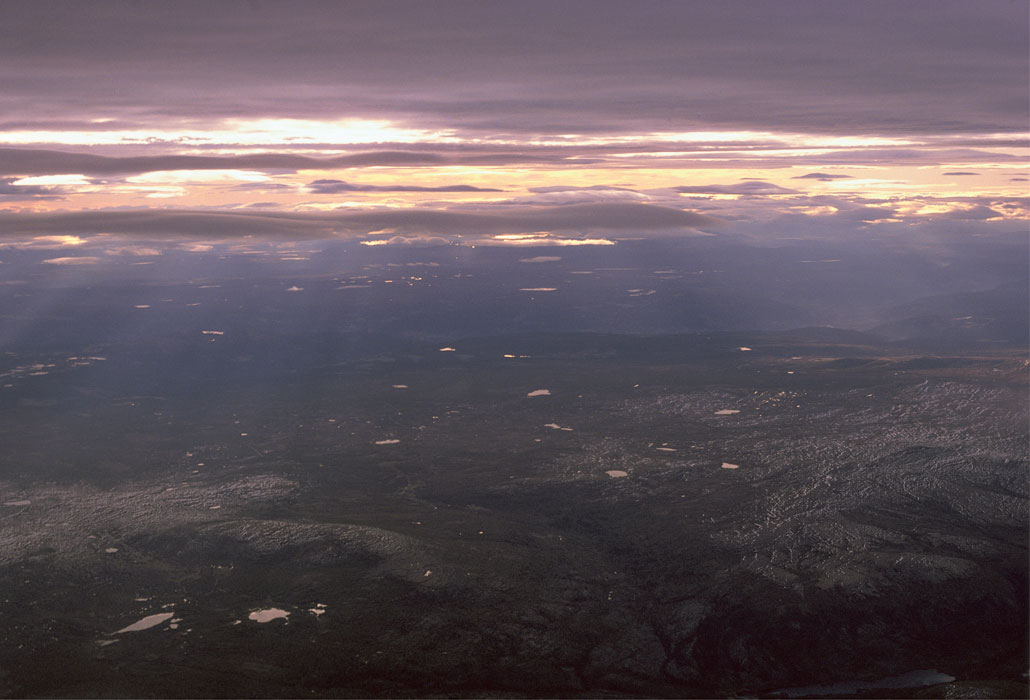The work is made from Arctic granite. It looks out towards the horizon at the end of the fjord. It was carved in seven blocks, through the winter and early spring of 1995, and was completed in the summer.
I decided to put it in the sea so that it makes a dark silhouette, and its scale is uncertain. It suggests a human presence in space, almost like a void, or a key-hole onto the space. The sculpture is a permanent inhabitant that is always and never there, and it responds to the weather: when it is wet, it turns completely black, when dry, it is a silvery grey.
Mo i Rana lies less than 100 kilometres below the Arctic circle, in Nordland, the most northerly and least populated region of Norway. 'Mo' means hill, 'Rana' is the name of the river. It was a small community of fishing and farming folk on the estuary of the Rana River on a fjord that leads out to the North Sea. All this changed with the discovery of iron in the late nineteenth century. German forces in the second world war occupied the town to exploit high load-bearing ore just north and east of Mo i Rana. They built a railway that went up to the coast, and the railway split the town.
Since the war, the growth of the town has been principally to the east of the railway. The combined effects of the coke works and its by-products such as arsenic and other heavy metals, poisoned the fjord until the end of the 1990s. The town more or less turned its back on the sea. This project was part of a reconciliation with a recovered nature.

